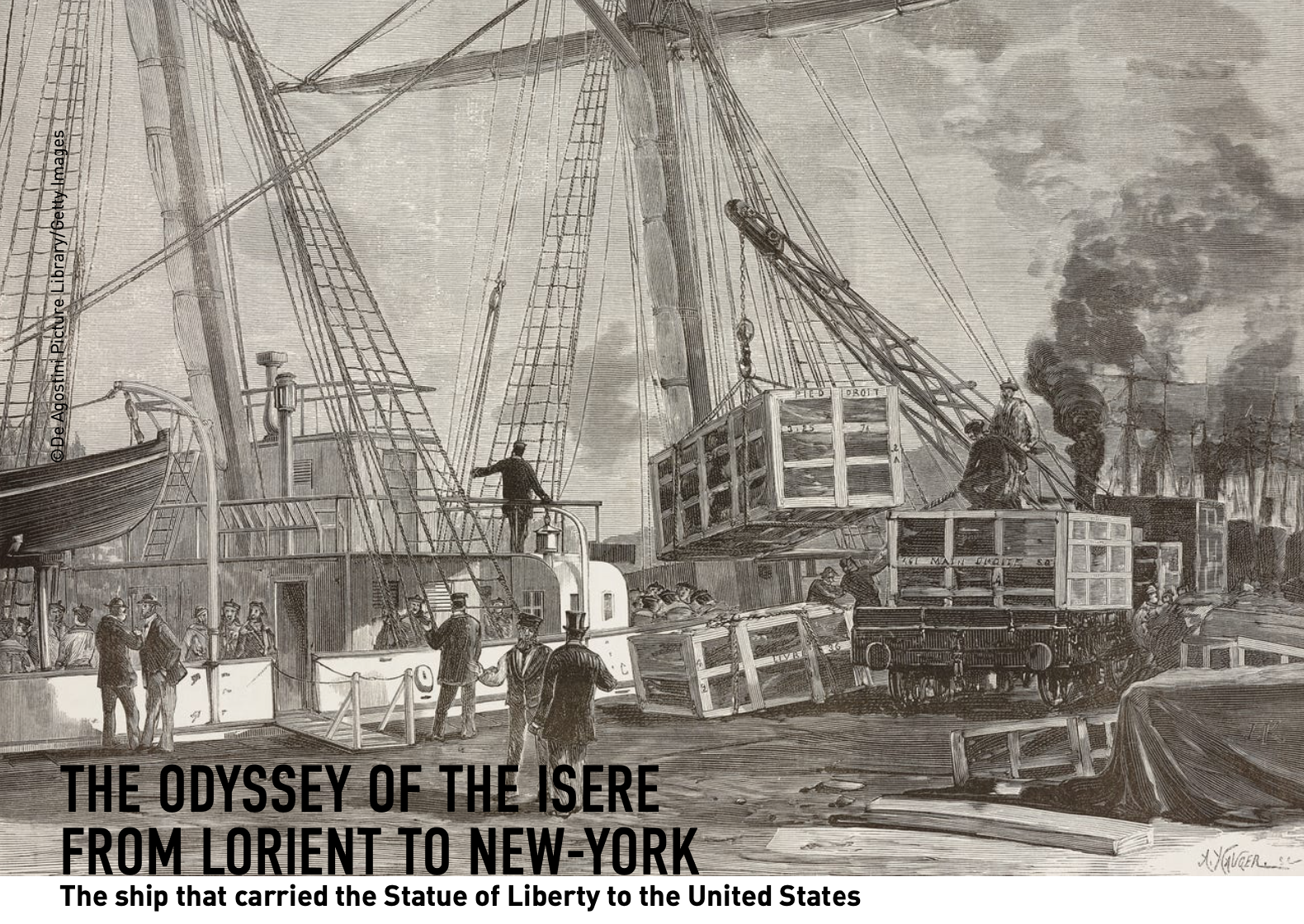Isère: A Symbol of Ingenuity in Maritime Propulsion
The port town of Lorient, born of the great maritime adventure and the first wave of global trade, flourished in the 18th century under the Compagnie des Indes and the prosperity of colonial commerce. Yet, this era has long overshadowed a remarkable chapter in the city’s maritime history: the naval innovation that unfolded at the Lorient arsenal from the 1820s onward.
When the French government selected Lorient as a hub for developing prototypes, the arsenal became the birthplace of pioneering advancements. These advancements, which Isère was a part of, allowed France to transition from screw-propelled ships to the battleships of the 20th century, progressively integrating the phases of the Industrial Revolution.
The Birth of Isère: Innovation Meets Ingenuity
Launched in the early summer of 1863, the frigate Isère was a testament to the golden age of the naval industry. It was a unique blend of cutting-edge technologies of its time—a metal hull and a steam engine with a propeller shaft—while still harnessing the power of the wind. With its 62-meter-long and 9.5-meter-wide hull, the ship displaced nearly 2,000 tonnes and featured a 580 hp engine designed by Lorient-born engineer Dupuy-de-Lôme.
Reflecting the era’s cautious embrace of innovation, the frigate carried sails alongside its steam engine, creating a dual propulsion system. This hybridity, characteristic of the late 19th century, revealed the reservations of the time about the reliability of mechanical innovations.
A Journey of Prestige and Purpose
With a crew of around 60 men, Isère participated in transport and supply missions to naval bases in France and its colonies, notably the Tonkin expedition of 1884. A year later, the ship was entrusted with a prestigious mission: transporting the Statue of Liberty from France to the United States as a gift commemorating America’s centenary of independence.
In May 1885, 200 crates containing Frédéric Bartholdi’s statue were loaded onto Isère at the river port of Rouen. The frigate set sail for New York on May 21 and arrived on June 17 after a challenging Atlantic crossing marked by violent storms.
The Legacy of Isère and the Future of Maritime Propulsion
Decommissioned in 1911, Isère was repurposed as a pontoon and later towed past Lorient harbor by the German Kriegsmarine during World War II. Today, the submerged remains of the ship’s hold that once housed Bartholdi’s iconic statue can still be seen at a depth of about 10 meters.
The hands of Lorient artisans that crafted Isère played a crucial role in uniting Breton and American craftsmen, reflecting centuries of collaboration. In today’s context, where wind propulsion is not just a historical curiosity but a recognized critical lever for reducing maritime logistics’ carbon footprint, the sailing industry’s ingenuity in providing clean propulsion is more vital than ever. The cross-fertilization of knowledge between traditional sailing techniques and modern technologies is beneficial and essential for the sector’s transition.
While shipowners and shipping companies have yet to embrace wind innovations, ocean, and yacht racing have fully driven sailing-related research and development over the past 50 years. These competitions have catalyzed the emergence of foils, composite material advances, and routing systems.
Thanks to these technical innovations, promising low-carbon vessel projects are emerging in France, offering the global economy a tangible opportunity to reduce its impact on climate change. As the return to hybrid propulsion takes shape, Isère emerges as a historical relic and a model of ingenuity, daring, and success, pointing toward a more sustainable future for the maritime industry.
Over the last 150 years, colossal technical advances have made decarbonizing maritime transport by sail a reality, charting a clear course for the marine sector in the fight against climate change.



